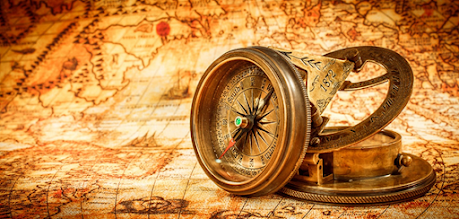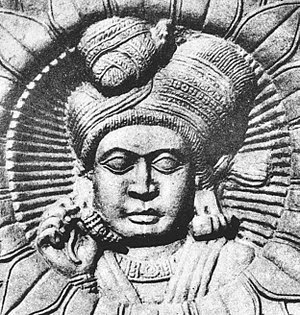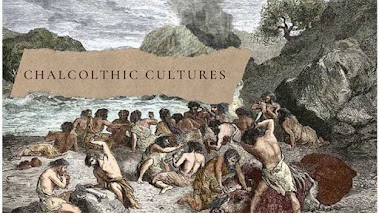INDIAN RAILWAY: LIFELINE THE TO NATION
Chapter 1: The Rise
On April 16th, 1853 (Chaitra Shukla Saptami, Shake 1775) , a historic moment took place in India's transportation history. The first passenger train in India ran between Mumbai and Thane, covering a distance of 34 kilometers. This was the birth of Indian Railways, which today stands as one of the largest railway networks in the world. As we celebrate the 170th anniversary of this significant event, let us take a journey through the history of Indian Railways.
Pic Credit: The train, travelling from Bori Bunder (CST) to Tannah (Thane), left the station at precisely 3.30 pm on 16 April, 1853. (Photo courtesy: Pinterest)
The idea of a railway system in India was first proposed in 1832 by Warren Hastings, the Governor-General of India. However, it was only in 1844 that the first railway company, the Great Indian Peninsula Railway (GIPR), was established. The GIPR was tasked with building a railway line between Mumbai and Pune, which was completed in 1858.
The success of the Mumbai-Pune railway line encouraged the British government to invest in the construction of more railway lines across the country. By 1880, the railway network in India had grown to cover almost 9,000 kilometers. The railways played a vital role in connecting various parts of India and helped in the transport of people and goods across the country.
The early 1900s saw the construction of several new railway lines, including the Bengal-Nagpur Railway and the Assam-Bengal Railway. The railways also played a significant role in the Indian freedom struggle, with several railway stations being used as meeting places and platforms for speeches by freedom fighters.
Post-independence, the Indian Railways was nationalized in 1951, and the different railway companies were merged to form one centralized organization. The Indian Railways continued to grow, and by 1985, it had become the largest employer in the country, providing employment to over a million people.
The Indian Railways faced several challenges in the late 20th century, including rising costs and declining revenues. However, the organization underwent several reforms in the 1990s, including the introduction of computerized ticketing and the separation of infrastructure and management. These reforms helped in improving the efficiency of the Indian Railways and making it more profitable.
Funny Story Regarding introduction of Toilets in Indian Railways
Dear Sir,
I am arrive by passenger train Ahmedpur station and my belly is too much swelling with jackfruit. I am therefore went to privy. Just I doing the nuisance that guard making whistle blow for train to go off and I am running with ‘lotah’ in one hand and ‘dhoti’ in the next when I am fall over and expose all my shocking to man and female women on plateform. I am got leaved at Ahmedpur station.
This too much bad, if passenger go to make dung that dam guard not wait train five minutes for him. I am therefore pray your honour to make big fine on that guard for public sake. Otherwise I am making big report! to papers.
Your’s faithfully servent
Okhil Ch. Sen.
The letter written by Okhil Chandra Sen in 1909 is a famous and humorous reminder of the challenges faced by passengers due to the lack of toilets on trains in the early days of Indian Railways.
In his letter, Okhil Chandra Sen expresses his frustration at missing his train at the Ahmedpur railway station because he had to answer "nature's call" and there were no toilets on the train. He goes on to detail his discomfort and the inconvenience caused by this lack of basic amenities. He then urges the Sahibganj Divisional office to take immediate action to set up toilets on trains, citing examples of other countries where toilets are provided for passengers.
The letter is a witty and sarcastic commentary on the state of affairs on Indian Railways at the time and highlights the need for basic facilities such as toilets on trains. It also showcases the power of public feedback and the impact it can have in bringing about change and improvement.
The letter is now a part of Indian Railways folklore and is often cited as an example of the early struggles faced by the institution in providing basic amenities to passengers. The Okhil Chandra Sen letter serves as a reminder of the evolution of Indian Railways and the importance of continuous improvement in meeting the needs and expectations of passengers.
Chapter 2: The Challenges and Help to the Nation
Indian Railways played a significant role in the transportation of troops, equipment, and supplies during the World War I and II, as well as the India-Pakistan War of 1965.
During World War I, Indian Railways served as a critical link between India and the Middle East, where British forces were fighting against the Ottoman Empire. The railways were used to transport troops, ammunition, and supplies to the war front. The railways also played a vital role in evacuating wounded soldiers from the battlefields.
In World War II, Indian Railways again played a crucial role in the transportation of troops and supplies. Indian Railways transported soldiers from across India to ports, where they embarked on ships to participate in the war. The railways were also used to transport equipment, ammunition, and supplies to the front lines. Indian Railways also had to deal with the challenges of rationing and shortages of fuel and other essential supplies during the war.
The Department of History, United States Military Academy
In the India-Pakistan War of 1965, Indian Railways once again played a critical role in the transportation of troops and supplies. The railways transported troops and equipment to the front lines and also helped evacuate wounded soldiers.
The railways had to deal with numerous challenges during the wars, including disruptions due to bombings, sabotage, and enemy action. However, despite the challenges, Indian Railways successfully managed to transport troops and supplies to the front lines, demonstrating its critical role in the defense of the country.
Chapter 3: The Independent India & The Indian Railway
After India gained independence in 1947, Indian Railways became a critical part of the country's development and modernization efforts. The railways played a crucial role in connecting different regions of India and facilitating the movement of people and goods across the country.
One of the first steps taken by the Indian government was to nationalize the railways, which were previously owned and operated by various private companies. In 1951, the government passed the Indian Railways Act, which established Indian Railways as a state-owned enterprise.
In the early years after independence, Indian Railways focused on expanding its network and upgrading its infrastructure. The railways also started to introduce new technologies and equipment to improve efficiency and safety.
In the 1950s and 1960s, Indian Railways played a vital role in facilitating the movement of refugees who were displaced during the partition of India. The railways also played a crucial role in connecting remote and underdeveloped regions of India, facilitating economic development and social integration.
In the decades that followed, Indian Railways continued to expand and modernize its network, introducing new technologies such as computerized reservation systems and modern signaling systems. The railways also invested in high-speed trains and other advanced technologies, such as the recently introduced Vande Bharat Express.
Pic: A Small Railway Station on Pune-Goa Track (Ambale) Pic Credit: Rushikesh Tanksale
The Train That Carries Love Across the Lines:
India shares a rich history with both Pakistan and Bangladesh, and one of the most significant links between the countries is the railway network. The railway lines and trains connecting India, Pakistan, and Bangladesh are an essential aspect of transportation and have played a vital role in shaping the relations between the nations.
The India-Pakistan railway line connects India's border town of Attari in Punjab with Pakistan's Lahore city. The line was closed after the India-Pakistan war of 1965 but was reopened in 1976. Since then, the Samjhauta Express has been running between Delhi and Lahore, and the Thar Express has been running between Jodhpur in India and Karachi in Pakistan. These trains have played a significant role in promoting people-to-people contact between the two countries and fostering cultural ties.
Similarly, the India-Bangladesh railway line connects West Bengal in India with Dhaka and Chittagong in Bangladesh. The line was closed after the partition of India in 1947 but was reopened in 2008. Since then, the Maitree Express has been running between Kolkata in India and Dhaka in Bangladesh, and the Bandhan Express has been running between Kolkata and Khulna in Bangladesh. These trains have brought the people of the two countries closer together and have facilitated trade and cultural exchange.
The railway lines and trains connecting India, Pakistan, and Bangladesh are not only important for transportation but also serve as a symbol of the shared history and cultural ties between the nations. They have played a significant role in promoting peace and cooperation between the countries, and it is essential to continue to strengthen these links for the benefit of all.
Chapter 3: The Modern India & The Indian Railways
Electric Locomotives: Indian Railways started using electric locomotives in the 1920s, and today, it has one of the largest electric fleets in the world. The electric locomotives are powered by overhead electric wires, which provide electricity to the locomotives. The Indian Railways electric locomotives are classified into four types, based on their power output and intended use:
- WAP-1: These locomotives have a power output of 4,500 horsepower (HP) and are used for long-distance passenger trains.
- WAP-4: These locomotives have a power output of 6,000 HP and are used for both passenger and freight trains.
- WAG-9: These locomotives have a power output of 6,000 HP and are used for heavy freight trains.
Pic: WAG 9 HI (Only Goods Locomotive to Pull the Passenger Trains) Pic Credit: Rushikesh Tanksale
- WAP-7: These locomotives have a power output of 6,500 HP and are used for high-speed passenger trains, such as the Rajdhani and Shatabdi Express.
Pic: WAP 7 One of The Fastest Passenger Locomotive Pic Credit: Rushikesh Tanksale
- WCAG 1: The locomotive which can run on both AC & DC Traction
Pic: WCAG 1 Pic Credit: Rushikesh Tanksale
Diesel Locomotives: Diesel locomotives are used on Indian Railways where electrification is not feasible or in remote areas where there is no electrification infrastructure. The Indian Railways diesel locomotives are classified into four types based on their power output and intended use:
- WDM-2: These locomotives have a power output of 2,600 HP and are used for both passenger and freight trains.
- WDM-3A: These locomotives have a power output of 3,300 HP and are used for both passenger and freight trains.
- WDG-4: These locomotives have a power output of 4,500 HP and are used for heavy freight trains.
Pic: WDG4G Pic Credit: Rushikesh Tanksale
- WDP-4D: These locomotives have a power output of 4,500 HP and are used for both passenger and freight trains.
The diesel locomotives have a lower power output compared to the electric locomotives but are still an essential part of the Indian Railways fleet, especially in areas where electrification is not feasible.
Revenue Matters:
Indian Railways generates revenue from both passenger trains and freight trains. However, the revenue generated from passenger trains is relatively lower than that of freight trains. Here is an overview of the revenue generated by Indian Railways from passenger and freight trains:
- Passenger Trains: Indian Railways operates both long-distance and suburban passenger trains. The revenue generated from passenger trains mainly comes from ticket sales. In the fiscal year 2020-21, Indian Railways earned approximately Rs. 15,141 crore ($2.03 billion) from passenger train operations. However, due to the COVID-19 pandemic, passenger train operations were suspended for several months, resulting in a significant drop in passenger revenue.
- Freight Trains: Indian Railways operates a vast network of freight trains that transport goods across the country. The revenue generated from freight trains comes from the transportation of various commodities such as coal, cement, iron ore, and fertilizers. In the fiscal year 2020-21, Indian Railways earned approximately Rs. 1,17,386 crore ($15.74 billion) from freight train operations, which accounted for more than 75% of its total revenue.
It is important to note that the revenue generated by Indian Railways from both passenger and freight trains has been affected by the COVID-19 pandemic. The suspension of passenger train operations and the slowdown in economic activity have led to a significant decline in railway revenue. Nonetheless, Indian Railways continues to play a crucial role in the transportation of goods and people across the country.
The Dedicated Frieght Corridor
The Dedicated Freight Corridor (DFC) was needed for several reasons. One of the main reasons is to decongest the existing rail network that carries both passenger and freight trains. Due to the heavy load of passenger trains, freight trains face delays and have to operate at sub-optimal speeds, leading to increased transit time, lower efficiency, and higher logistics costs.
Pic: Good’s locomotive waiting for an Passenger Train to pass to get track clearance Pic Credit: Rushikesh Tanksale
The DFC provides a separate track exclusively for freight trains, allowing them to operate at higher speeds and transport goods more quickly and efficiently. This will reduce transit time and logistics costs for businesses and improve the overall competitiveness of Indian exports.
Another reason for the DFC is to provide a safer and more reliable transportation system for the movement of goods. By separating freight traffic from passenger traffic, the risk of accidents and delays is significantly reduced.
The Dedicated Freight Corridor (DFC) is a large-scale infrastructure project by the Indian government aimed at creating a dedicated railway network for the transportation of goods. The project involves the construction of two corridors: the Eastern Dedicated Freight Corridor (EDFC) and the Western Dedicated Freight Corridor (WDFC).
The EDFC starts from Ludhiana in the northern state of Punjab and ends at Dankuni in the eastern state of West Bengal, covering a distance of 1,856 kilometers. The WDFC starts from Jawaharlal Nehru Port in Mumbai and ends at Tughlakabad in Delhi, covering a distance of 1,504 kilometers.
The project aims to provide faster and more efficient movement of goods across the country, reducing transportation costs and improving the competitiveness of Indian industries. It is expected to lead to a significant reduction in transit time, from the current average of 24 hours to 14 hours for the 1,500 km stretch between Delhi and Mumbai.
The Dedicated Freight Corridor Corporation of India (DFCCIL), a special purpose vehicle set up by the government, is responsible for the implementation of the project. The project has been funded by the Indian government, the World Bank, and the Japan International Cooperation Agency (JICA).
The DFC is expected to have a major impact on the Indian economy by enabling faster and cheaper movement of goods, thereby reducing logistics costs and improving supply chain efficiency. It will also provide a fillip to the "Make in India" campaign, which seeks to encourage domestic manufacturing and exports.
The Modern Indian Railway:
The Indian Railways has come a long way since its inception in 1853. It has undergone a major transformation over the years, with the introduction of modern technology and indigenous innovation. One such innovation is the Vande Bharat Express, also known as the Train 18, which was launched in 2019.
The Vande Bharat Express is India's first fully indigenous semi-high-speed train. It was designed and manufactured by the Integral Coach Factory (ICF) in Chennai, India, in just 18 months. The train has several features that make it unique, such as a state-of-the-art propulsion system, automatic doors, and GPS-based passenger information system. It also has a top speed of 180 km/h, making it one of the fastest trains in India.
The Vande Bharat Express was built with the aim of providing passengers with a comfortable and safe travel experience. It has 16 coaches, including two executive class coaches and 14 chair car coaches, with a seating capacity of 1,128 passengers. The train is also equipped with several modern amenities, such as onboard Wi-Fi, infotainment systems, and bio-vacuum toilets.
The launch of the Vande Bharat Express was a significant moment for the Indian Railways. It showcased India's capability to develop and manufacture advanced technology in-house, reducing dependence on foreign imports. It was also a step towards modernizing the Indian Railways and providing passengers with a world-class travel experience.
As, Of Writing this article there are 13 Vande bharat running with goverments aim to have 75 VB’s by end of August.
A blog by Rushikesh Tanksale
(Team Historic Wednesday)
NOTE: -
This blog is meant for educational purposes only. The information provided in this article is not investment advice. We do not own any Copyrights related to images and information; all the rights go to their respective owners. The sole purpose of this blog is to Educate, Inspire, Empower and to create awareness in the viewers. The usage is non-commercial (Not for Profit) and we do not make any money from it.
Write your feedback here:
https://forms.gle/C3ybXMPPUaJBgP618
FOLLOW US ON:-
INSTAGRAM:
https://bit.ly/coep_blogs_insta
LINKEDIN:
https://bit.ly/coep_blogs_linkedIn
YOUTUBE:-











Comments
Post a Comment